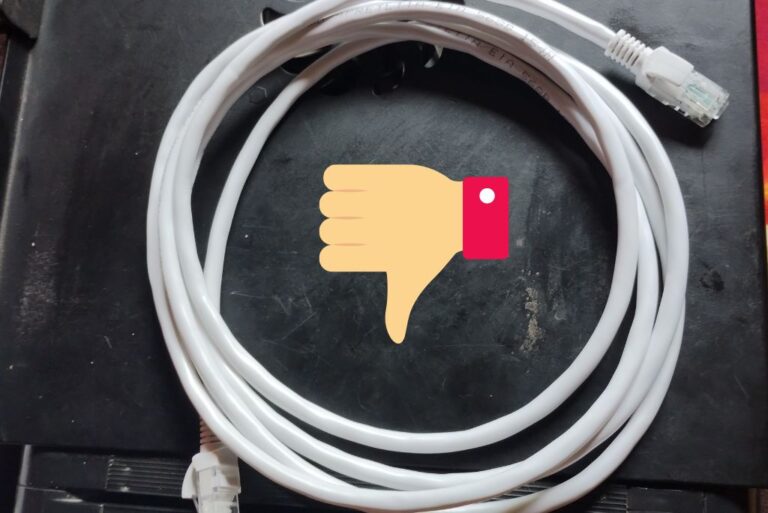No, a Cat8 Ethernet cable is not bad for gaming; however, for nearly every home gaming setup, it is considered significant overkill and offers no discernible performance advantage over a high-quality Cat6a or even a Cat6 cable. The primary reason is that Cat8’s immense capabilities—designed for high-speed data centers—far exceed the requirements of online gaming and the internet speeds available to residential users. Your gaming performance is primarily limited by your internet service provider’s speed and, more importantly, your network’s latency (ping), neither of which a Cat8 cable can improve in a typical home environment.

As manufacturers with years of experience engineering high-performance network solutions at DLAY CABLE, we understand the intricate details that separate cable categories. While the allure of having the “best” and “fastest” technology is strong, a smarter approach involves matching the right tool for the job. For a gamer, this means focusing on a stable, low-latency connection, which can be achieved perfectly with more cost-effective and practical cabling solutions. dlaycable will break down precisely why Cat8 is unnecessary for gaming, what factors truly impact your online experience, and which Ethernet cable is the real champion for your gaming rig.
What is a Cat8 Ethernet Cable Really Designed For?
To understand why Cat8 isn’t the magic bullet for gaming, we must first appreciate its intended purpose. Cat8 is an engineering marvel, but it was built to solve a problem that simply doesn’t exist in a home gaming environment. It represents the cutting edge of twisted-pair copper cabling, designed for next-generation network infrastructure in very specific, high-demand settings.
Understanding Cat8’s Core Specifications
Category 8, or Cat8, cable is defined by the ANSI/TIA-568-C.2-1 standard. Its specifications are a massive leap from previous generations:
- Speed: Supports data transfer rates up to 40 Gbps (Gigabits per second).
- Bandwidth: Operates at a frequency of up to 2000 MHz.
- Distance Limitation: Achieves these top speeds only over a short distance of up to 30 meters (about 98 feet).
- Shielding: Cat8 cables are always shielded (S/FTP – Shielded/Foiled Twisted Pair) to protect against crosstalk and electromagnetic interference (EMI) in electrically noisy environments. This makes the cables thicker, stiffer, and more challenging to install than their unshielded counterparts.
The Intended Environment: Data Centers and Servers
The combination of ultra-high speed over a short distance points directly to Cat8’s true home: the data center. It’s specifically designed for “top-of-rack” or “end-of-row” connections, linking servers to switches within the same server rack or adjacent racks. In these environments, moving massive amounts of data in fractions of a second between machines is critical. A 40 Gbps pipeline is necessary for tasks like data replication, virtualization, and high-performance computing clusters. Your gaming PC, PS5, or Xbox, which only needs to send and receive small packets of game data, doesn’t come close to saturating even a 1 Gbps connection, let alone a 40 Gbps one.
The Great Cable Showdown: Cat8 vs. Cat6a vs. Cat6 for Gaming
For gamers, the most relevant question is how Cat8 stacks up against the cables they are most likely to use. Let’s compare the real-world implications of choosing between Cat8, Cat6a, and Cat6 for a gaming setup. This comparison reveals a clear point of diminishing returns.
| Feature | Cat6 | Cat6a | Cat8 |
|---|---|---|---|
| Max Speed | 10 Gbps (up to 55m) | 10 Gbps (up to 100m) | 40 Gbps (up to 30m) |
| Bandwidth | 250 MHz | 500 MHz | 2000 MHz |
| Shielding | Often Unshielded (UTP) | Available as UTP or Shielded (STP) | Always Shielded (S/FTP) |
| Typical Cost | $ (Most Affordable) | $$ (Slightly more) | $$$$ (Most Expensive) |
| Best For | Home networking, 1 Gbps internet | Future-proofing, 10 Gbps home networks, reducing crosstalk | Data centers, server-to-switch links |
Speed and Bandwidth: More Isn’t Always Better
The most glaring numbers are the speed and bandwidth. A Cat8 cable’s 40 Gbps capability is incredible, but your gaming rig is limited by your internet plan. The average internet speed in the US is well under 1 Gbps. Even if you have a premium fiber optic plan providing 1, 2, or even 5 Gbps, a Cat6a cable (rated for 10 Gbps) can handle it with ease. Your internet connection is the **bottleneck**, not the Ethernet cable. Using a Cat8 cable is like building a 16-lane superhighway that leads to a single-lane country road—the extra lanes on the highway provide no benefit because the exit is the limiting factor.
Latency and Ping: The Real Gaming Killers
This is the most critical point for any gamer. **Latency**, often measured as *ping*, is the time it takes for a data packet to travel from your device to the game server and back. Low ping is essential for responsive, lag-free gaming. A common misconception is that a “faster” cable like Cat8 will lower your ping. This is fundamentally untrue for any meaningful gaming metric.
Latency is determined by the distance to the game server, the efficiency of the network routers along the path, and the quality of your local network hardware (your router). A well-constructed Cat6, Cat6a, or Cat8 cable will all transmit the electrical signals at nearly the speed of light over the short distances in your home. The difference in signal travel time across a 10-foot Cat6 vs. a 10-foot Cat8 cable is measured in picoseconds—a trillionth of a second. It is a value so small it is completely imperceptible and has zero impact on your ping as displayed in a game. Stable connectivity, not theoretical top speed, is what ensures low and consistent ping.
Cost and Practicality: Where Your Money is Best Spent
Cat8 cables are significantly more expensive than their Cat6 and Cat6a counterparts. This is due to the stricter manufacturing tolerances, the mandatory and robust S/FTP shielding, and the pure copper conductors required to meet the 40 Gbps standard. Given that there is no performance benefit for gaming, the extra cost is essentially wasted. That money would be far better invested in areas that *do* impact gaming performance, such as:
- Upgrading your internet service plan for more bandwidth.
- Purchasing a high-quality gaming router with better Quality of Service (QoS) features.
- Investing in a better GPU or CPU for your PC.
Answering Key Gamer Questions About Cat8
Let’s address some of the most common questions gamers have when they encounter Cat8 cables online or in stores.
Will a Cat8 cable lower my ping?
No. As explained above, a Cat8 cable will not lower your ping in any measurable way compared to a functioning Cat6 or Cat6a cable. Ping is a function of distance and network congestion, not the data capacity of the last few feet of cable in your home. A high-quality, well-made cable of any modern category (Cat6 and up) ensures a stable connection, which is the cable’s only real contribution to your latency.
Is Cat8 good for a PS5 or Xbox Series X?
A Cat8 cable will work perfectly fine with a PS5 or Xbox Series X because Ethernet standards are backward compatible. However, it is entirely unnecessary. The PS5 and Xbox Series X both have 1 Gbps Ethernet ports (though some newer PS5 models have 2.5 Gbps ports). A Cat6 cable can handle up to 10 Gbps, and a Cat6a also handles 10 Gbps. Both are more than sufficient to max out the console’s network port. You gain nothing by connecting a Cat8 cable except a lighter wallet.
Am I “future-proofing” my setup with Cat8?
This is a tempting argument, but it’s largely a fallacy for home use. The concept of “future-proofing” with Cat8 assumes that residential internet speeds will eventually exceed 10 Gbps and that home networking devices will adopt 40 Gbps ports. While possible, this future is likely decades away for the average consumer. By the time 40 Gbps internet is common in homes, a new, more practical, and cheaper cabling standard will likely exist. A Cat6a cable, capable of 10 Gbps, provides more than enough “future-proofing” for the entire predictable lifespan of your current gaming hardware.
What Ethernet Cable Should Gamers Actually Use?
Now that we’ve established Cat8 is overkill, what is the right choice? The decision comes down to a balance of performance, cost, and practicality.
The Sweet Spot: Why Cat6a is the Top Recommendation
For the vast majority of gamers, **Cat6a is the ideal choice**. It offers the perfect blend of performance and future-readiness without the exorbitant cost and rigidity of Cat8. It comfortably handles 10 Gbps speeds, which is more than enough for any current or near-future residential internet plan. Furthermore, its superior 500 MHz bandwidth and better inherent protection against crosstalk make it exceptionally reliable, ensuring a rock-solid connection for competitive gaming.
The Reliable Standard: When Cat6 is More Than Enough
If you’re on a budget and your internet plan is 1 Gbps or less (which covers most people), a **Cat6 cable is perfectly adequate**. It provides excellent performance for all current gaming needs and is the most cost-effective solution. You will not experience a performance difference in your game between a Cat6 and a Cat6a cable on a 1 Gbps connection. It remains a workhorse for modern home networks.
The Importance of Cable Quality (Shielding and Build)
Regardless of the category you choose, the *quality* of the cable matters more than the number on its jacket. As cable manufacturers, we see firsthand the difference between well-made and poorly made cables. Look for cables with **100% pure bare copper conductors**, as they offer superior conductivity and durability compared to cheaper Copper Clad Aluminum (CCA) alternatives. For most homes, an unshielded (UTP) cable is fine, but if your gaming setup is near power bricks, fluorescent lights, or other sources of potential EMI, a shielded (STP or FTP) Cat6a cable can provide an extra layer of signal integrity.
The Verdict: Is Cat8 a Poor Choice for Gaming?
To circle back to our original question: Is Cat8 *bad* for gaming? No, it’s not bad in the sense that it will harm your performance. It will work just fine. However, it is a **poor value and an illogical choice** for a gamer. It provides zero tangible benefits over Cat6a for gaming, yet it costs significantly more and is harder to handle.
Choosing Cat8 for gaming is an exercise in spending money without a return on investment. It’s a solution to a problem you don’t have. Prioritize a stable connection with a high-quality Cat6a or Cat6 cable, and you’ll have everything you need for a competitive, lag-free gaming experience.
Your Network is a Team: The Cable is Just One Player
Remember that your Ethernet cable is just one component of your network. For the best gaming experience, every part of the team needs to perform well. This includes:
- Your Internet Plan: Ensure you have enough bandwidth for your needs.
- Your Modem: Use a modern modem (like a DOCSIS 3.1 for cable) capable of handling your plan’s speeds.
- Your Router: A good gaming router with modern QoS can prioritize game traffic and reduce bufferbloat.
- A Wired Connection: Always choose a wired Ethernet connection over Wi-Fi for gaming to ensure the lowest latency and most stable signal.
By focusing on these elements and choosing a proven, high-quality cable like Cat6a, you are setting yourself up for victory—not by chasing the highest number, but by building a smart, efficient, and stable network.

